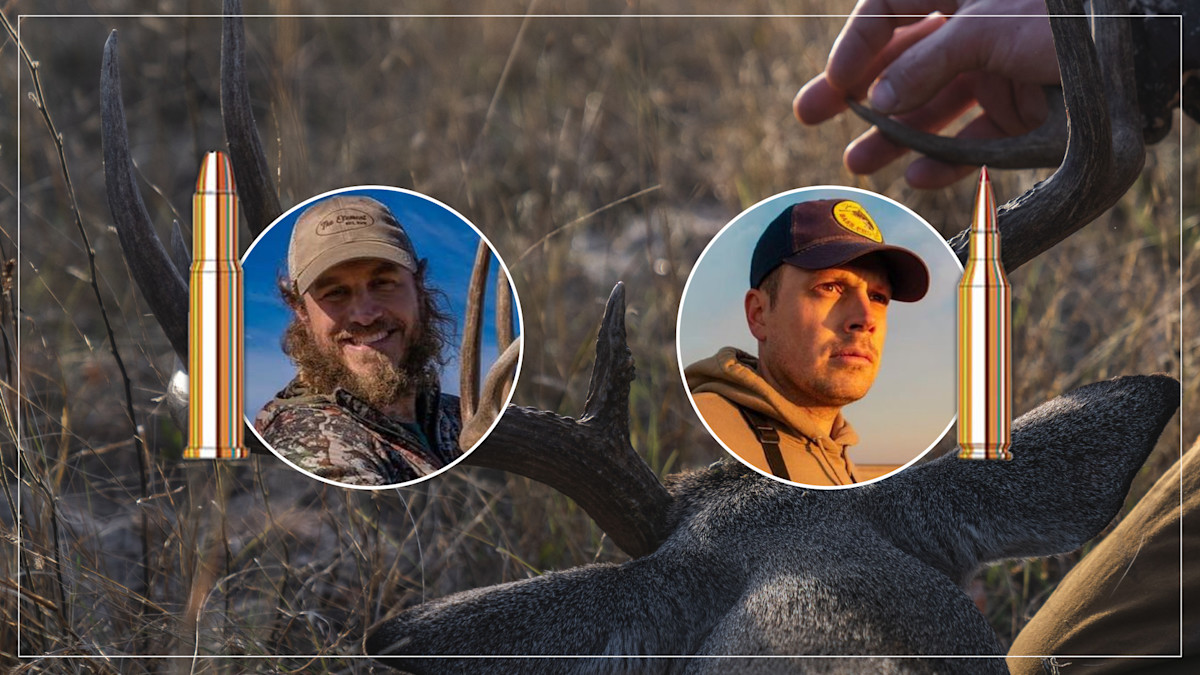
Update: We have a winner! Tyler's .243 Win. squeaked out a victory against K.C.'s .30-30 Win. on a 68-60 vote. Many voters who picked the .243 did so due to its superior range, and its ability to take whitetail on a variety of landscapes. Now, Tyler's .243 Win. will face off against Mark's .30-06 in the championship matchup. Be looking for that article later today.
Tyler’s .243 Win. beat Garrett’s 6.5 Creedmoor in the first round largely on account of nostalgia–everyone loves their first deer rifle, and it’s tough to pick a newcomer like the Creed. But Tyler’s .243 won’t have that advantage in this semi-final matchup against K.C.’s .30-30 Win. If there’s one cartridge with more history and fuzzy feelings than the .243, it’s gotta be the .30-30.
If you already have your pick, scroll down to the comments and cast your vote. If you need any more info, we’ve outlined the best arguments for each cartridge below.

And don’t forget to vote in the other semi-final round, which you can do by clicking here.
The Case for K.C.’s .30-30 Winchester
What cartridge comes to mind when you hear the phrase “deer woods rifle”? Chances are, it’s the .30-30 Winchester. America’s first smokeless cartridge has been around since 1895, and incredibly, it’s still popular (and effective) to this day. That’s why K.C.’s .30-30 Win. got a bye in the first round–it may not be the fastest or most powerful cartridge, but it is the oldest, and we respect our elders around here.
K.C. told me he likes the .30-30 because it reminds him of the Old West and good times with family.
“My dad loved ‘The Rifleman’ as a young man, and received a .30-30 Winchester as a birthday gift for his first deer hunting rifle,” K.C. said. “He’s killed many deer with that gun. I went with him on my first hunt ever at four years old and a buck went down with that rifle that evening. I hope to inherit it one day and pass it down to my boys after that.”
It’s easy to miss, but wrapped in the nostalgia of K.C.’s memory is the reason the .30-30 has remained popular in the midst of today’s high-speed-low-drag offerings: “He’s killed many deer with that gun.”
The .30-30 is most popularly chambered in lever-action rifles, but it can be had in bolt and single-shot long guns, too. Whatever it’s chambered in, it’s a pleasure to shoot. With only about 10 foot-pounds (ft.-lbs.) of recoil energy, it’s the easiest-shooting rifle in the tournament. That makes it a great option for young and new hunters, but even veteran hunters can appreciate quick-handling, quick-shooting .30-30 rifles.
It’s the least powerful of this tournament’s competitors, but the truth is that it doesn’t take a cannon to bring down a whitetail (as any bowhunter can tell you). With bullets in the 150 to 170 grain range flying between 2,200 and 2,400 feet-per-second (fps), the .30-30 can produce 1,900 ft.-lbs. of energy at the muzzle and over 1,000 ft.-lbs. of energy at 200 yards. This load from Federal has only dropped about six inches at that distance, which only requires a slight point-of-aim adjustment.
If you don’t plan on shooting beyond 200 yards (which most whitetail hunters don’t), why use more cartridge than you need? Why not go with a cartridge that won’t hurt your shoulder, that’s chambered in handy, lightweight rifles, and that can be found on virtually every ammo shelf in America? That’s why the .30-30 has remained a mainstay of the deer woods for over 100 years, and why it’s likely to stay for 100 years to come.
The Case for Tyler’s .243 Winchester
The .243 isn’t known for its long range capabilities–some of you picked the 6.5 Creedmoor in the last round because you said it offered better power at longer ranges. But against the .30-30 Win., the best argument for the .243 is just that: range.
For example, these 90-grain .243 loads from Sig Sauer produce about the same muzzle energy as the .30-30 mentioned above, but the bullets are traveling about 700 fps faster. That means that with a 100-yard zero, the bullet drops 1.1 inches at 200 yards, 6.9 inches at 300 yards, and 35 inches at 500 yards. The .30-30, by contrast, drops six inches at 200 yards and 23 inches at 300 yards.
The .243 also maintains its kinetic energy far better than the .30-30. The .243 maintains 1,484 ft.-lbs. of energy at 200 yards, 1,292 ft.-lbs. of energy at 300 yards, and 966 ft.-lbs. at 500 yards. The .30-30 has dropped down to 803 ft.-lbs. at 300 yards and 453 ft.-lbs. at 500 yards–just over half what the .243 can offer even though they leave the muzzle with roughly the same amount of energy.
You might argue that neither cartridge is great for long-range work, so this is all a moot point. But 200 yards isn’t really “long range.” Unlike the .30-30 at that distance, the .243 lets you put the crosshairs on target and pull the trigger, and it offers 400 additional ft.-lbs. of energy. For many hunters, even those who go after big bucks in the big woods, that slightly extended range is worth a few extra pounds of recoil.
So, who you got? Comment below to cast your vote. If you want to explain your reasoning, feel free. But you don’t have to. The cartridge that gets the most votes by 11:59 pm MT on Thursday, October 5 will advance to the next round.
Click here to check out all the kickass deals happening right now for Whitetail Week.



